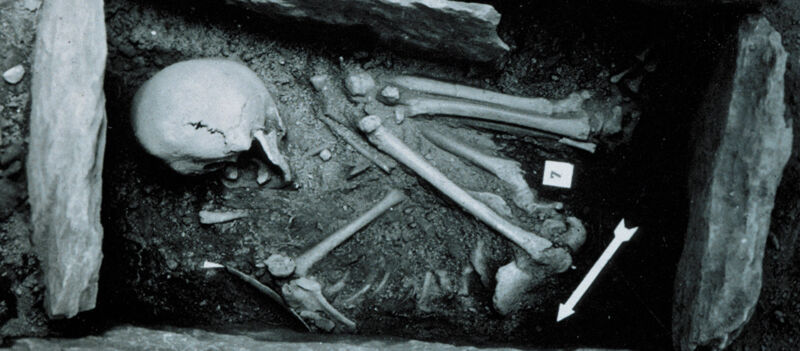Egalitarian oddity found in the Neolithic

Enlarge / A skeleton found during 1950's excavations at the Barman site. (credit: Universite de Geneve)
Did ancient people practice equality? While stereotypes may suggest otherwise, the remains of one Neolithic society reveal evidence that both men and women, as well as locals and foreigners, were all equal in at least a critical aspect of life: what they ate.
The Neolithic saw the dawn of agriculture and animal husbandry some 6,000 years ago. In what is now Valais, Switzerland, the type and amount of food people ate was the same regardless of sex or where they had come from. Researchers led by Deborah Rosselet-Christ of the University of Geneva (UNIGE) learned this by analyzing isotopes in the bones and teeth of adults buried in what is now called the Barmaz necropolis. Based on the 49 individuals studied, people at the Barmaz site enjoyed dietary equality.
Unlike other similar studies of Neolithic burials, the Barmaz population appears to have drawn its protein resources from a similar environment, with the same access to resources for adults, whether male or female," the researchers said in a study recently published in the Journal of Archaeological Science: Reports.